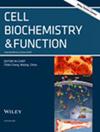HDAC4-AS1/CTCF Transcriptionally Represses HDAC4 Under Stress, Whereas HDAC4 Inhibits Stress-Induced Syncytiotrophoblast Cellular Pyroptosis by Deacetylating NLRP3 and GSDMD
Abstract
Our previous study reported that histone deacetylase 4 (HDAC4) expression is significantly downregulated in placental tissues of pre-eclampsia (PE) pregnancies. Cellular pyroptosis is a key event in the pathogenesis of PE that induces the release of factors into the maternal circulation. The aim of this study is to analyze the role and related molecular mechanisms of HDAC4 in PE trophoblast cell pyroptosis. Hypoxia and lipopolysaccharide (LPS)/ATP-treated immortalized human placental villous trophoblast cells HTR-8/SVneo were utilized to mimic the placental trophoblast cell state in PE. Both hypoxia and LPS/ATP treatments induced significant HTR-8/SVneo cell pyroptosis, whereas HDAC4 overexpression inhibited the induced cell pyroptosis. HDAC4 could bind to NLRP3 and GSDMD proteins, and lead to a decrease in acetylated NLRP3 and GSDMD proteins, thereby inhibiting cell pyroptosis. Hypoxia and LPS/ATP treatment significantly upregulated HDAC4-AS1 levels in HRT-8/SVneo cells. HDAC4-AS1 could bind to HDAC4 gene promoter sequences as well as CTCF protein. HDAC4-AS1 overexpression recruited the enrichment of CTCF on HDAC4 promoter sequences and further repressed HDAC4 transcription and expression. Targeting the transcriptional regulatory mechanism of HDAC4-AS1/HDAC4 may be able to ameliorate the clinical symptoms of PE maternal by inhibiting cellular pyroptosis in syncytiotrophoblast cells under stress.




 求助内容:
求助内容: 应助结果提醒方式:
应助结果提醒方式:


